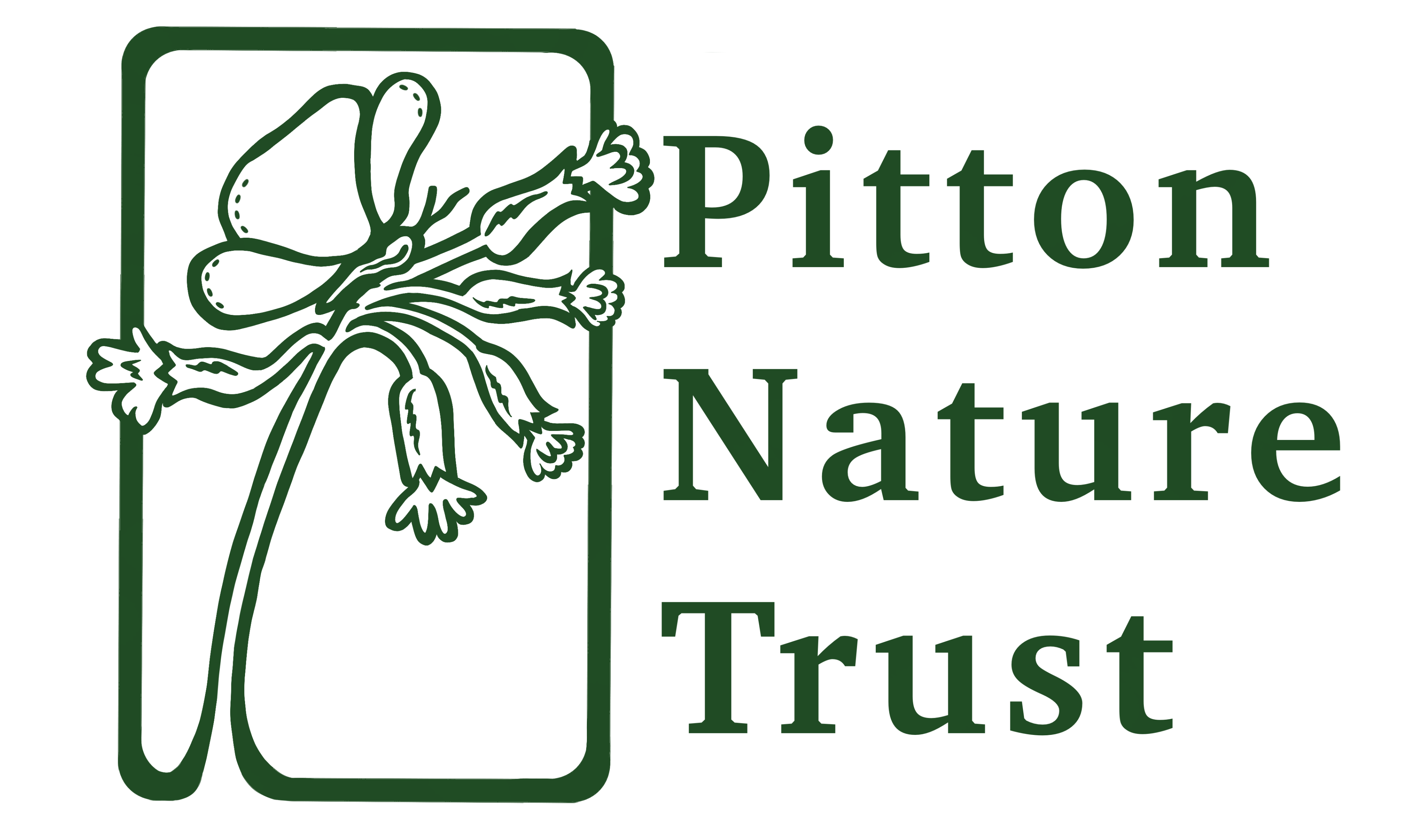During 2024 local resident Carole Smith has been conducting regular surveys of the wildflowers in The Close. Here are some of her pictures and details of what she has seen.
Knapp Weed
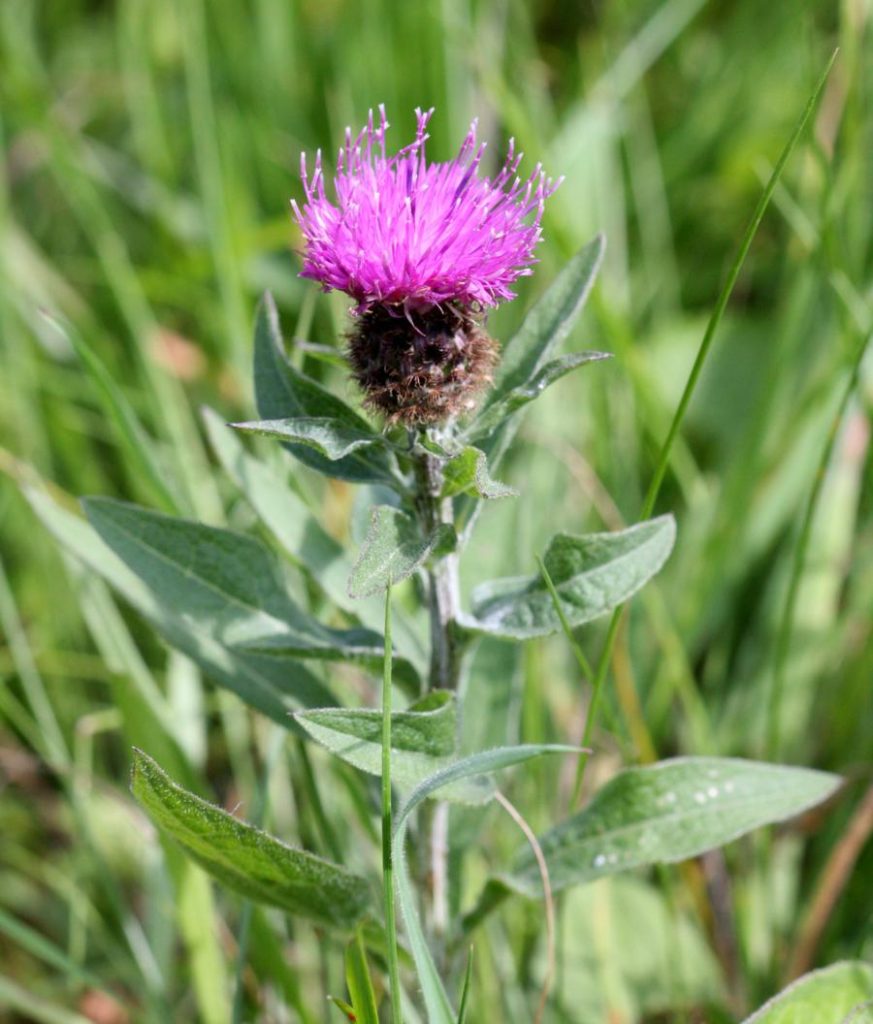
Common knapweed, also known as ‘black knapweed’, is a thistle-like plant. It flowers from June to September and is a huge favourite of all kinds of butterflies, including common blues, marbled whites and meadow browns, and is sometimes covered in these species.
Greater Knapp Weed
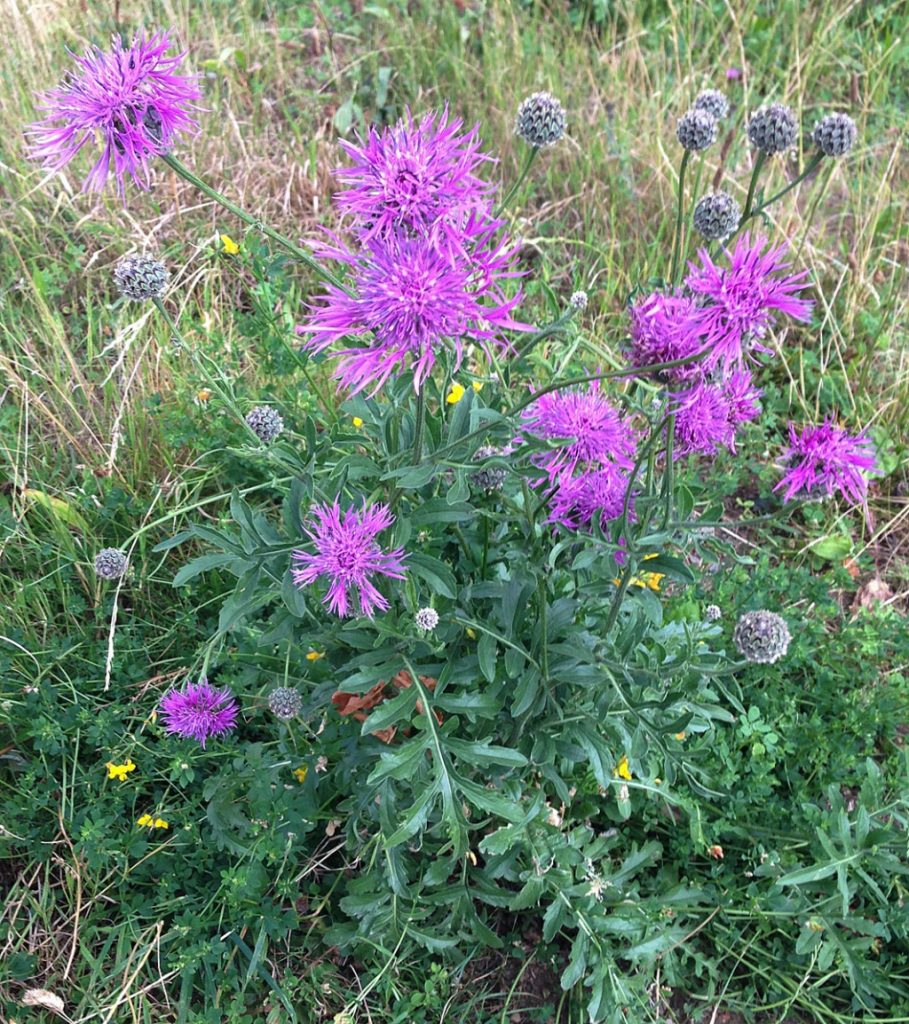
This has larger flowers and more divided leaves than common knapweed and it thrives on chalk.
As with common knapweed it has a rich source of nectar and is loved by pollinators including bees, butterflies and moths. Look out for common blue, marbled white and meadow brown butterflies.
The seed heads will attract finches to feed.
Germander or Birds Eye Speedwell
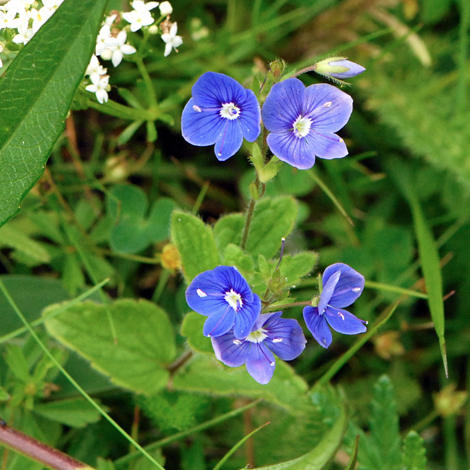
The small blue flowers appear from April to June. germander speedwell is an excellent nectar source for solitary bees
It is a low-growing plant and one of a number of different speedwells. It has upright spikes of bright blue flowers with four petals and a white middle (giving it other common names such as ‘Bird’s Eye’ and ‘Cat’s Eye’). It has two rows of long white hairs on opposite sites of its stems, unlike the rarer Wood Speedwell, which is hairy all round the stem.
Yarrow
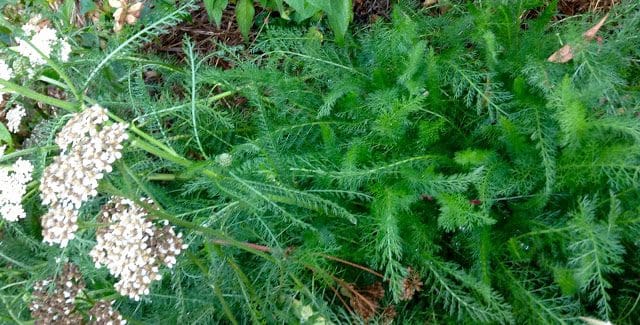
Yarrow flowers from June to November it attracts bees, beneficial insects, birds, butterflies/moths and other pollinators such as ladybirds and hoverflies It has nectar/pollen rich flowers and has seeds for birds.
Yarrow has dark green, finely divided, feathery leaves. It has flat-topped clusters of white flower heads.
Wood Avens
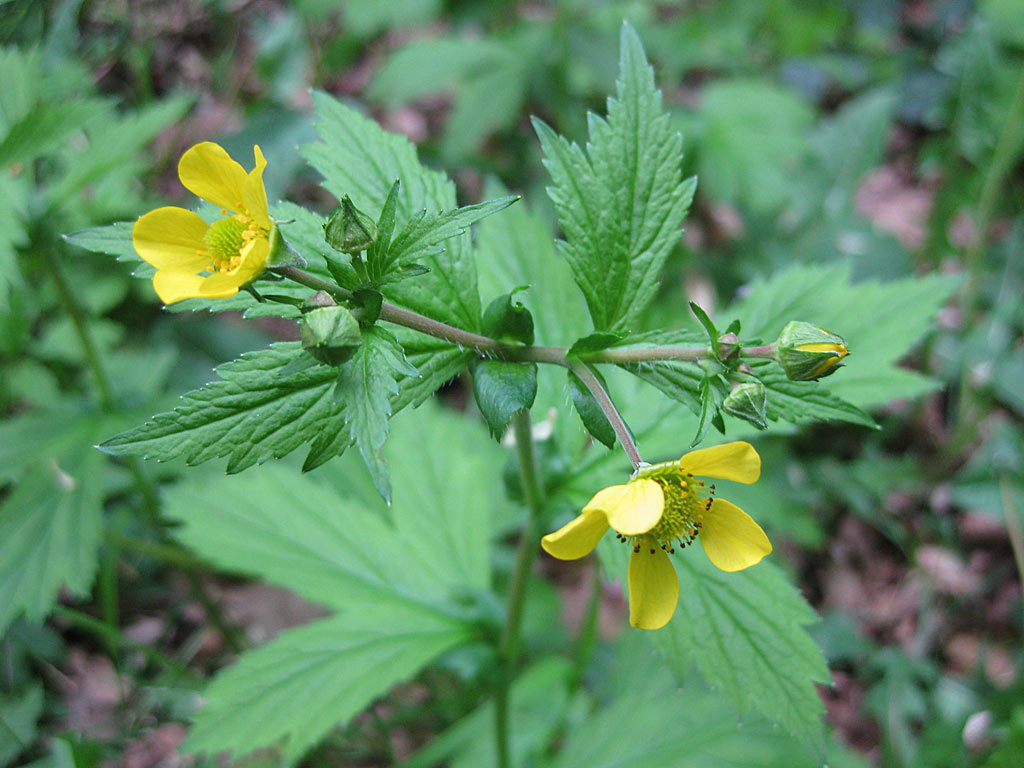
Yellow flowers appear on slender stems from May to August and are a good source of nectar. Wood avens is also a foodplant of the caterpillars of the grizzled skipper butterfly.
Wood Avens is a straggly, hairy plant that has downy, three-lobed leaves with toothed edge, and yellow flowers with five petals. The flowers appear in loose clusters and are replaced by spiky seed heads with red hooks that can easily get picked up by passing animals.
Meadow or Tall Buttercup
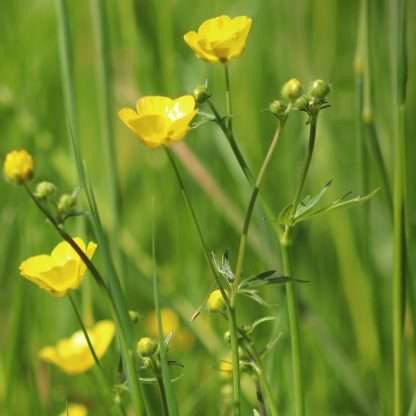
Meadow buttercup flowers between April and October. It is the tallest and most graceful of all the butter-cups and its nectar and pollen rich flowers are attractive to bees, butterflies and hoverflies.
It prefers slightly damper, calcareous sites. It can become common in grazed pastures because they are poisonous to grazing animals, so are avoided.
Creeping Buttercup
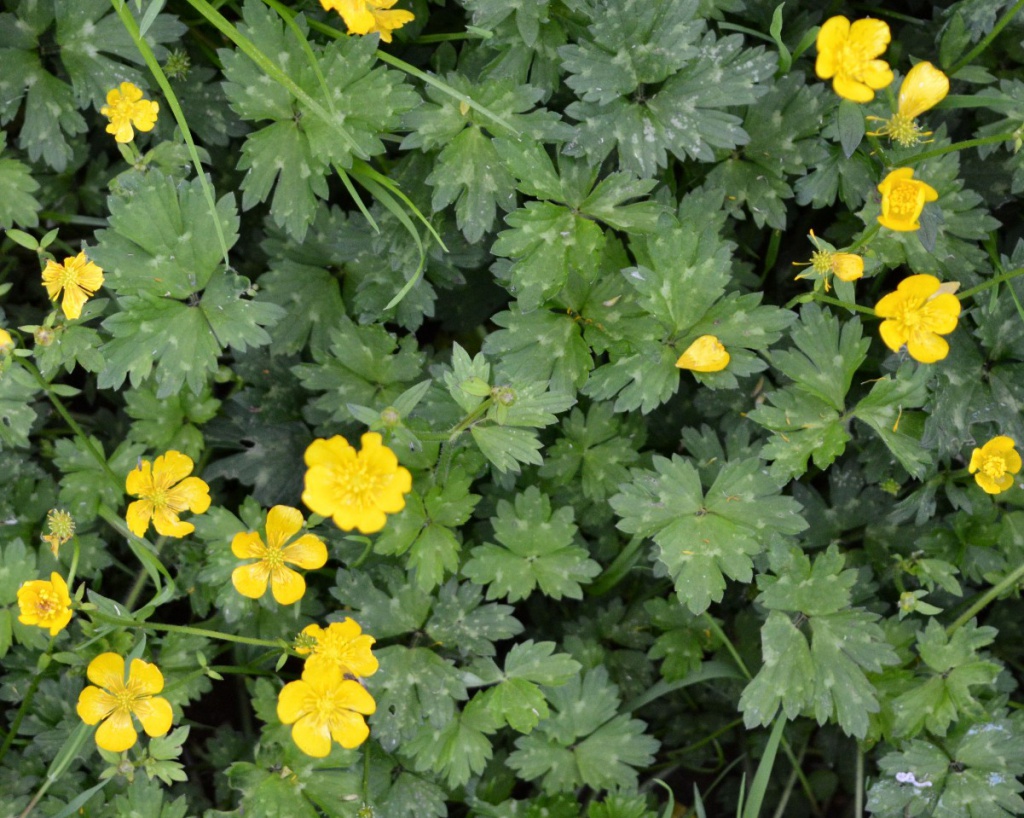
This is the common buttercup. It flowers mainly between May and August. Its long, rooting runners help it to spread easily.
Creeping buttercup is a great plant for wildlife, with its nectar and pollen rich flowers attractive to bees, butterflies and hoverflies. It is also a food plant for a range of other creatures, including beetles, leafhoppers, and leaf mining flies.
Ribwort Plantain or Knock Heads
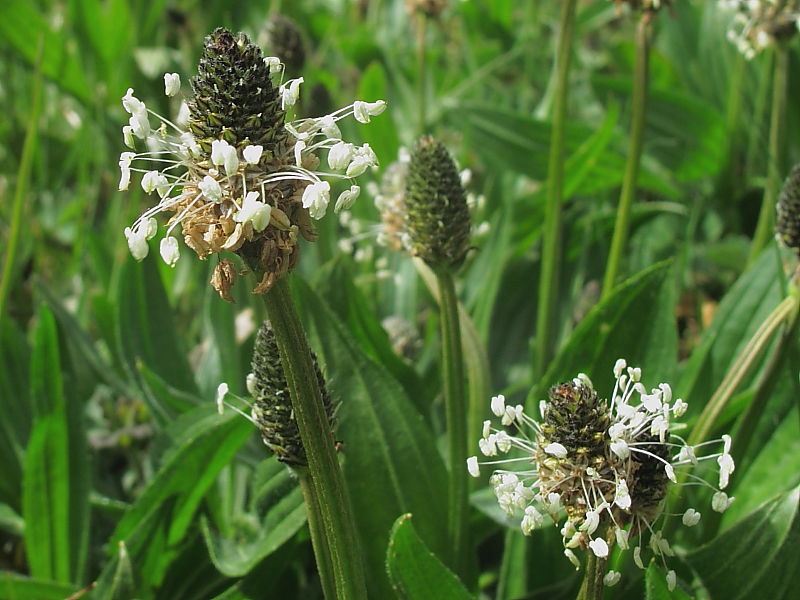
It flowers between April and October; Its seed heads remain for most of the winter providing food for goldfinches and other seed-eating birds.
Ribwort Plantain is the subject of a game that’s similar to conkers hence the name knock heads. By twisting the stem the seed heads can Also be fired as if from a gun.
Cow Parsley
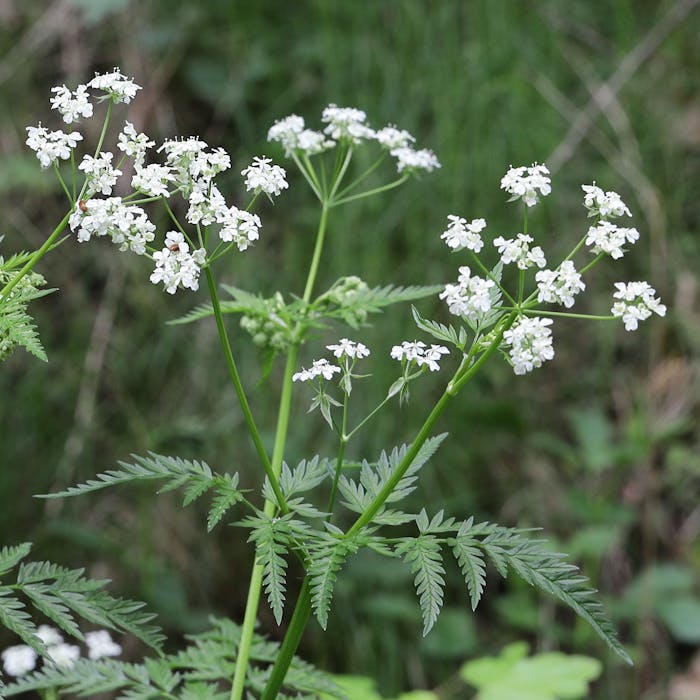
Cow parsley which is also known as Queen Anne’s Lace, has flower umbels (umbrella-like clusters) which appear from May until June. It is attractive to a huge number of creatures, from orange-tip butterflies to marmalade hoverflies, and even rabbits.
Cow parsley is a hollow-stemmed, tall plant that grows rapidly in the summer before dying back. It likes shady habitats
Part of a large family of “umbellifers” including celery, carrot and parsley.
Common Sorrel
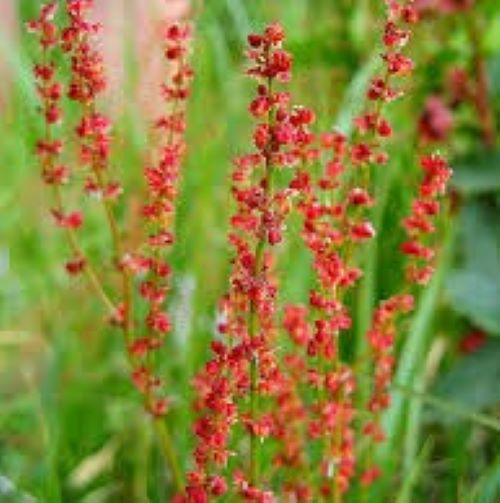
The name ‘Sorrel’ denotes a sour-tasting plant, owing to the presence of oxalic acid. It is also known as “Sour Ducks”
Provides food for caterpillars of the forester moth and small copper butterfly
Pinkish red flowers spikes appear in May and June. Arrow-shaped leaves grow from the stem at the base of the plant.
Dandelion
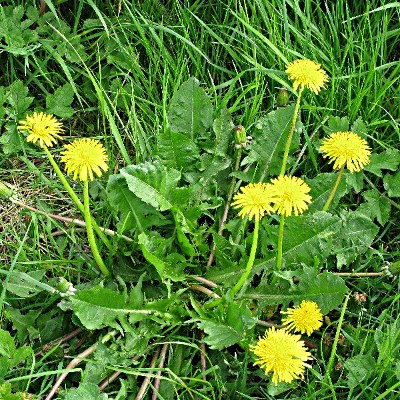
Dandelions play a vital role in wildlife food chains. In Britain we have around 250 different varieties. They support more than fifty species of insects including bees, moths, flies, beetles, wasps and butterflies.
For early-emerging pollinators they provide a lifeline of nectar when flowers are scarce in early spring.
The leaves are a caterpillar food plant for a variety of moth species, including the orange swift, large yellow underwing, giant leopard and riband wave.
The developing seeds are a favourite spring foodstuff for lots of birds, especially finches which pry open flowering heads to feed.
Common Hogweed
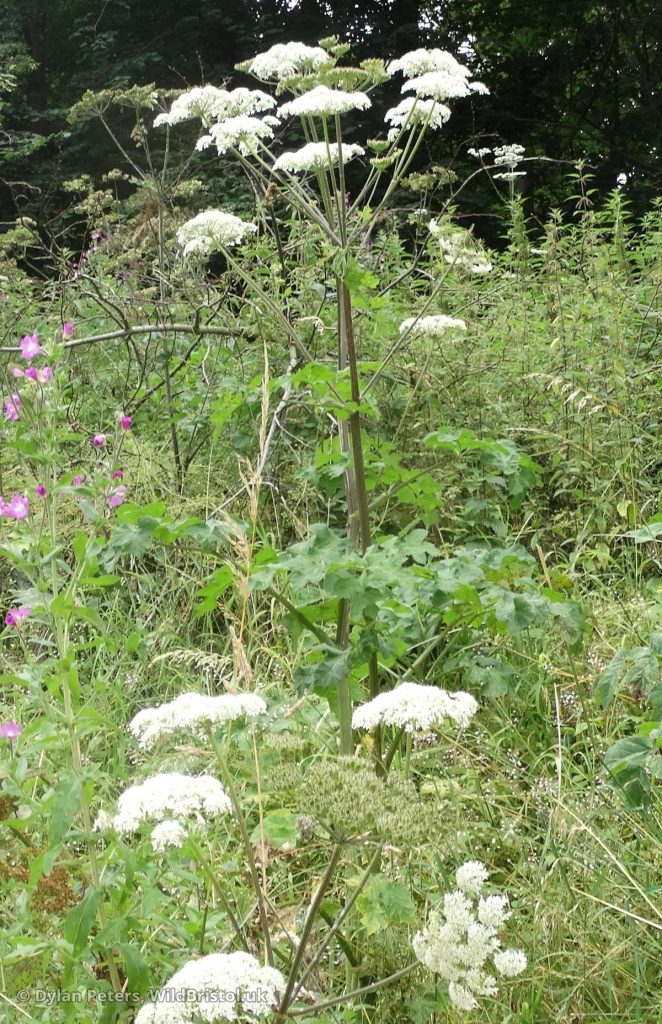
Also known as Cow Parsnip it has large white umbellifer flowers often tinged pink. The flowers have a great deal of nectar for many different pollinators and the seeds provide useful bird feed in winter.
The young shoots are considered excellent eating by many foragers but contact with the plant can cause skin irritation or skin lesions.
It should however not be confused with Giant Hogweed which is very much bigger and is poisonous and non-native.
Wood Dock
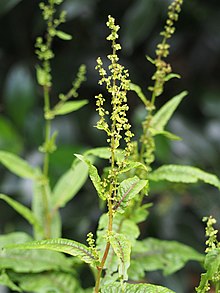
Also known as Red Dock the narrow, green leaves become wider and often develop red veins as they mature.
It is an important food source and will attract a variety of wildlife it provides cover for insects in the spring and birds enjoy the seed heads in the winter.
Field Bindweed

Field Bindweed is a trailing or creeping plant, It’s funnel-shaped flowers seen between June and September may be pink, white, or pink-and-white striped, and are sweet-scented.
It climbs up the stems of grasses and other plants and its leaves are grey-green and arrow-shaped. It can become a pest in places as it stops other plants from growing.
Its flowers provide pollen for bees and the leaves are a source of food for the larvae of convolvulus hawk moths and the common plume moth.
Goose Grass or Cleavers
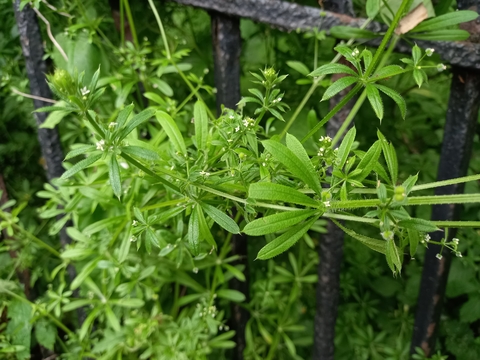
Also known as sticky grass because it easily hooks on to clothing. Cleavers is a climbing plant, using the hooks on its stems to aid its scrambling progress. The hooks on its fruits attach to animals (and us) to help disperse its seeds.
It is used as food for chickens and geese. Its leaves and stems are high in protein, and are enjoyed by many species of birds and mammals, including rabbits and deer.
Cleavers has around 50 associated species of insect including the gall midge and sawfly larvae. Several species of moths use cleavers as their larval foodplant, including the barred straw, the water carpet, and the widespread gothic moth.
White Clover
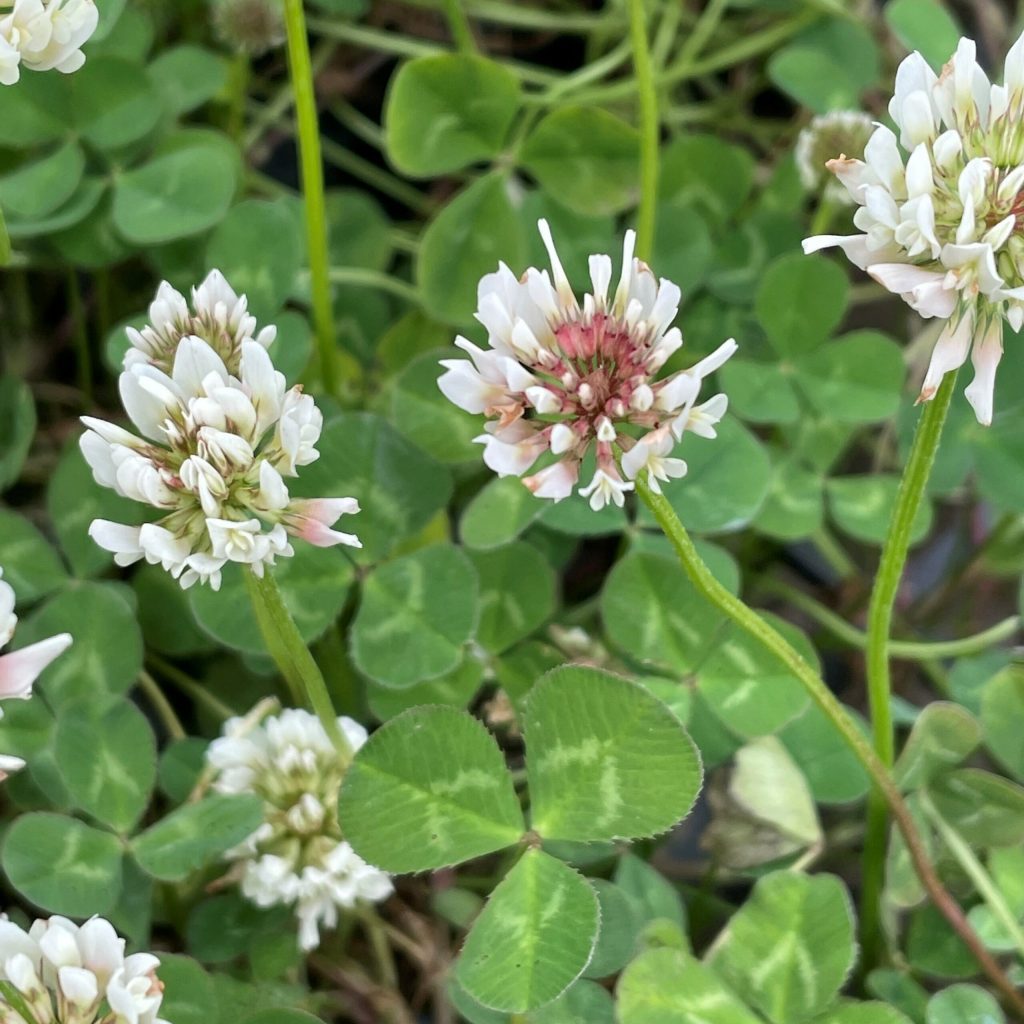
Clover flowers from May to August and provides a rich source of nectar and pollen which attracts honey bees and a wide range of other bee species. After flowering, it attracts seed-eating birds. The leaves are rich in protein and provide a useful source of food for small mammals such as field mice, when other foods like fruits and nuts are in short supply.
The plant is also a food source for caterpillars of moths and butterflies, including the Common Blue.
White Clover has root nodules that host nitrogen-fixing bacteria. These make atmospheric nitrogen available to feed the plant and enrich the soil.
Common Agrimony
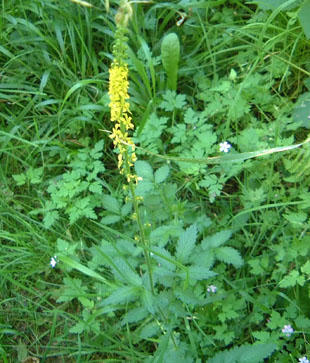
Common agrimony is a beautiful meadow flower with long narrow yellow flower spikes whichare a great nectar source for hoverflies and bees.
The seeds are sticky burrs, that hook onto the fur of animals for distribution.
Agrimony is also the food plant for the caterpillar of the grizzled skipper butterfly.
Ground Ivy
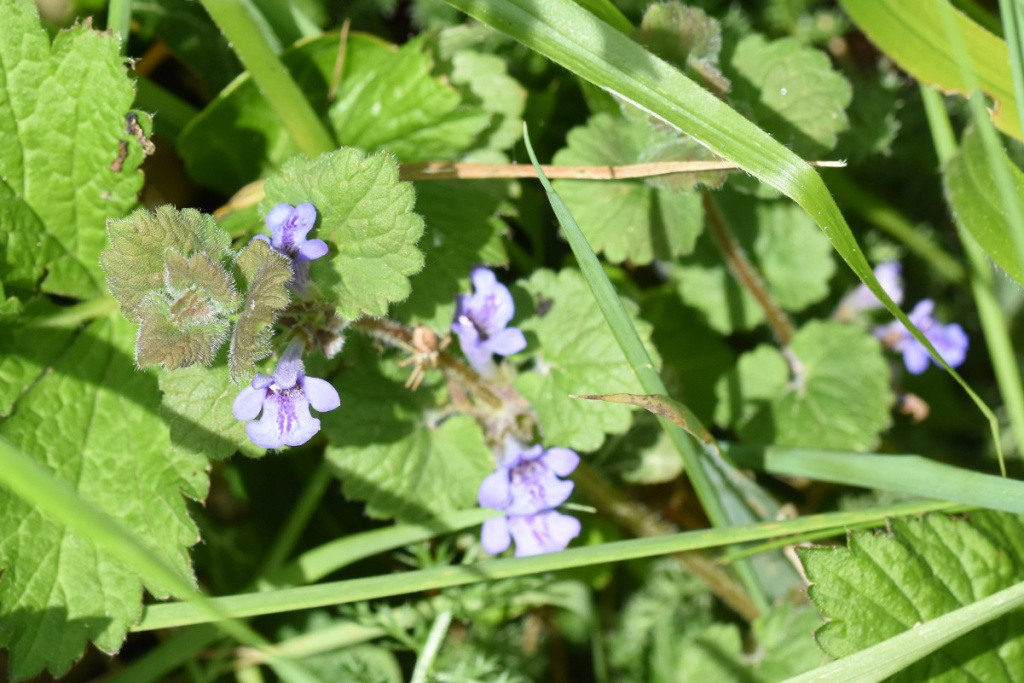
Despite its name, it is not a type of ivy but it spreads like ivy does, with long rooting runners. It has lipped violet-blue flowers from March to June.
It attracts flower bees, carder bees and solitary bees and it provides a food source for caterpillars of the scarce Jersey Tiger moth.
Ground ivy is toxic to horses and livestock and it can be difficult to control its spread.
Stinging Nettle
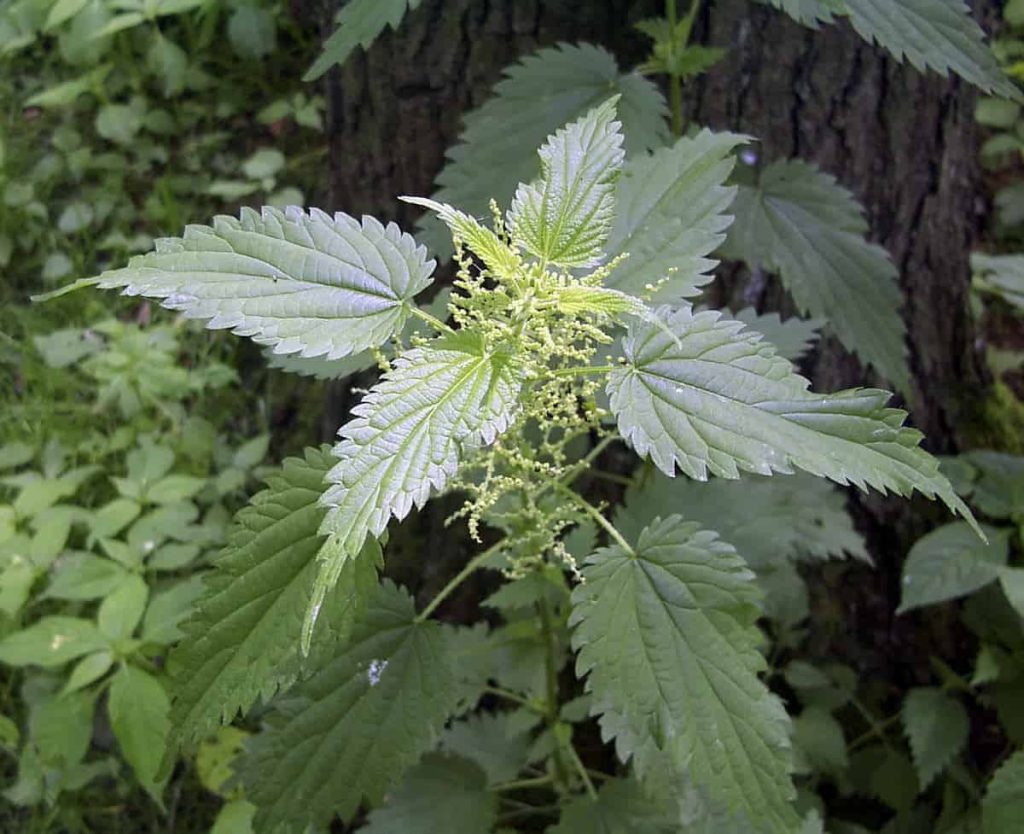
Stinging nettles are great for wildlife
Caterpillars of the small tortoiseshell, peacock, comma, red admiral and painted lady butterflies all use them as food plants. They are also the food plant of many moth larvae such as the snout, dot, burnished brass and younger mother-of-pearl.
Ladybirds feast on the aphids that shelter among them and many other insects are associated with nettles including damsel bugs, capsids, weevils, beetles, and spiders.
They tend to spread and may dominate particularly in shady areas.
Creeping Cinquefoil

Yellow flowers appear from May to September and provide nectar for many insects. It spreads via long runners and can become invasive.
Creeping Cinquefoil is a food source for caterpillars of the yellow shell moth.
